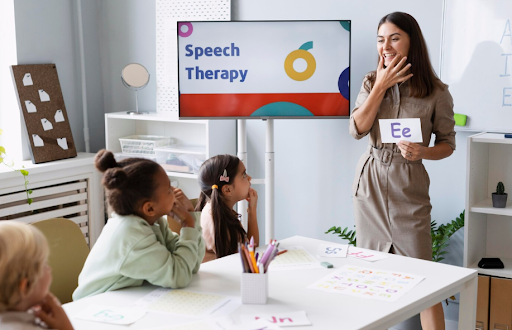Mastering British Sign Language (BSL) is crucial for educators and leaders aiming to create more inclusive environments for the children they support. Whether engaging with Deaf or hard-of-hearing students or cultivating greater understanding among all learners, developing BSL skills is invaluable. An excellent way to achieve this is by enrolling in a Level 2 signature BSL online course. This advanced course provides structured, flexible, and practical learning opportunities to help educators bring inclusivity and effective communication directly into their work.
This guide explores the importance of BSL in educational settings, provides practical steps for mastering it, and offers actionable ideas for incorporating it into daily interactions with children.
Why Learning BSL Is Crucial for Educators and Leaders
BSL is not merely a communication tool; it is a vibrant and expressive language with its grammar, structure, and cultural heritage. By learning and using BSL, educators can create inclusive and welcoming spaces where all children feel empowered and included.
Benefits of BSL for Educators and Students
- Promotes Accessibility
BSL ensures that Deaf and hard-of-hearing students can fully participate in lessons, activities, and interact with their peers. For educators, it bridges communication gaps, ensuring every child has access to the same opportunities.
- Encourages Empathy and Inclusivity
Introducing sign language into classrooms fosters mutual respect and understanding of diversity. Children learn to value others’ experiences, gaining a vital foundation in empathy.
- Improves Cognitive and Social Development
Learning a new language helps children enhance their memory, problem-solving skills, and communication abilities. Additionally, engaging with signing promotes teamwork and respect for different modes of expression.
By integrating BSL proficiency into your skillset, you become a key advocate for equity within educational environments.
Steps to Master BSL
1. Enroll in a Formal Training Program
Starting with the right training is critical for mastering BSL. Beginners might start with introductory courses, but progressing to a Level 2 signature BSL online course provides more advanced skills. These programs typically include essential elements such as conversational fluency, syntax, and vocabulary suited to professional and instructional settings, including classroom terminology.
The flexibility of online courses enables busy educators to learn at their own pace, incorporating materials such as video demonstrations, quizzes, and practical exercises into their daily routines.
2. Establish a Daily Practice Routine
Achieving proficiency requires consistent practice. While structured classes build foundational skills, daily application strengthens them over time.
Tips for Effective Practice:
- Dedicate 15–20 minutes daily to practicing key signs.
- Use flashcards specific to classroom or childcare contexts to build vocabulary.
- Mirror your signing on a reflective surface or record videos to monitor accuracy.
- Incorporate virtual BSL learning apps to complement your studies.
Embedding practice into your daily schedule helps you retain knowledge and build confidence.
3. Engage Directly with the Deaf Community
One of the most effective ways to master any language is real-world engagement. Connecting with native BSL users builds fluency and teaches valuable cultural nuances.
Ways to Connect:
- Attend Deaf community events or workshops.
- Volunteer at schools, charities, or organizations that serve Deaf and hard-of-hearing populations.
- Join online BSL forums or communities for regular interactions with experienced sign language users.
Engaging with the Deaf community not only sharpens your language abilities but also reinforces cultural sensitivity and authenticity in your usage.
4. Bring BSL into the Classroom
The best way to apply and master BSL is by incorporating it into your professional interactions. Incorporating sign language into daily classroom routines enables consistent usage and benefits all students.
Practical Tips for Classroom Integration
- Teach students basic signs for greetings, emotions, or classroom instructions.
- Use BSL for simple commands or in conjunction with spoken language.
- Create visual aids that feature signs related to key topics or curriculum themes.
- Include interactive activities, such as storytelling or role-playing, that use BSL to engage all learners.
When used regularly, BSL becomes second nature in your teaching environment, reinforcing its value for you and your students.
5. Utilize Technology and Learning Tools
Modern technology makes BSL learning accessible and engaging. A wide range of resources is available to support learners at every stage of their learning.
Helpful Tools for BSL Learners:
- Online Dictionaries enable quick referencing of unfamiliar signs.
- Video Tutorials from experienced signers or organizations demonstrate techniques clearly.
- BSL Learning Apps, such as Sign BSL or BSL Zone, allow interactive practice anywhere.
- Children’s TV Shows or Videos Featuring BSL engage younger learners while you hone your skills.
Integrating these tools into your personal or professional learning process accelerates development and ensures continual practice.
6. Monitor Progress and Seek Feedback
To ensure proficiency, actively track your progress and invite constructive feedback from peers or experienced signers.
Effective Methods for Evaluation:
- Test yourself on classroom-relevant signs and phrases.
- Watch videos of fluent signers interpreting their communication.
- Ask native or qualified BSL users for suggestions on improving clarity, accuracy, or naturalness.
These reflections keep your learning on track and illuminate areas for improvement.
Conclusion
Educators and leaders must model inclusivity and set the tone for equality in educational environments. By mastering BSL, you not only facilitate access for Deaf children but also influence the attitudes of all students toward creating an inclusive and respectful culture. Learning BSL is not just a professional milestone; it’s a commitment to inclusivity that benefits the children you work with and enriches your career. Begin with a Level 2 signature BSL online course, engage in meaningful practice, and lead by example in everyday interactions.
When every child feels seen and valued, the impact of your work extends far beyond the classroom walls.

